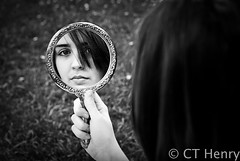 In my last post, I mentioned how Ansel Adam’s powerful quote, “You don’t take a photograph, you make it,” becomes the guiding principle and foundation of the course. In the next lesson, we look at quotes by other photographers and ask how we can incorporate their lessons into our own photography. I’m going to ask you to do the same. After reading each quote, ask yourself:
In my last post, I mentioned how Ansel Adam’s powerful quote, “You don’t take a photograph, you make it,” becomes the guiding principle and foundation of the course. In the next lesson, we look at quotes by other photographers and ask how we can incorporate their lessons into our own photography. I’m going to ask you to do the same. After reading each quote, ask yourself:
1. What does the quote mean to you?
2. How will this advice improve your photography?
“Get a Notebook. No photographer should be without one!” – Ansel Adams
All of my students are required to carry a notebook in their camera bag. It’s a place for technical notes and shot lists, but it’s also easily accessible when you’re out in the field shooting and you forget how to do something.
“Take your dang camera with you everywhere! Cartier-Bresson took his camera with him everywhere—to the cleaners, to the cafe, to the cinema…he always had his trusty Leica M2 with him.” – Chris Orwig
I can’t stress this enough: It takes practice to be good at anything. You’ve got to do your visual push-ups everyday. The best way to do this is take your camera with you wherever you go.
“Your first 10,000 photographs are your worst. – Henri Cartier-Bresson
Don’t think that you can become a great photographer in one day or in a year. You’ve got to put in the time. You’ve got to spend a lot of time looking. You’ve got to click the shutter and learn from your mistakes. Ansel Adams is also famous for saying, “Twelve significant photographs in any one year is a good crop”. And he’s a professional!
“Become a more interesting person” – Jay Maisel responding to a student who asked him how to create more interesting photographs.
I can’t resist adding another quote of Jay’s since he’s the Yoda of photography quotes: “You have to want to look before you can see. There are a lot of people who think that the world and their life are boring. They don’t want to look. They’re negative outlook is what they bring to the world. Life is a bore. They don’t what to see possibilities; they’re not open to the world around them. They don’t see colors or gestures. You’ve got to want to look before you can see. It’s what you bring to it.” Essentially, living an enriched life makes you see the world rather than just look at it.
“Still of hand does not make up for emptiness of heart” – Rodney Smith
“The camera for an artist is just another tool. It is no more mechanical than a violin if you analyze it. Beyond the rudiments, it is up to the artist to create art, not the camera.” – Brett Weston
You can know all the camera techniques by heart and still miss the decisive moment. While you may be able to hand-hold a camera at 1/15 of a second and get the shot in perfect focus, it doesn’t mean that your image will touch people’s lives.
“I always thought good photos were like good jokes. If you have to explain it, it just isn’t that good.” – Syl Arena
Your photos should speak for themselves. If you find yourself explaining them, you need to work harder to tell the story visually.
“Photography is essentially an art of exclusion…It’s not always what you put in your frame – it’s sometimes what you leave out.” – David duChemin
The best images look effortless. Just like a poet says so much in so little words, aim to reduce the concept to its essence by ruthlessly excluding all the elements that don’t add to the story.
“The difference between great photographers and a not so great photographers is that the great ones don’t show their crappy pictures.” – Rick Sammon
Edit fiercely. Many of my photos end up in the trash. I’m only interested in the keepers.
“Which of my photographs is my favorite? The one I’m going to take tomorrow.” – Imogen Cunningham
Never be truly satisfied. Always have room for more photos and improvement.
Next Post: Three Things You Should Do with Your New Digital Camera







